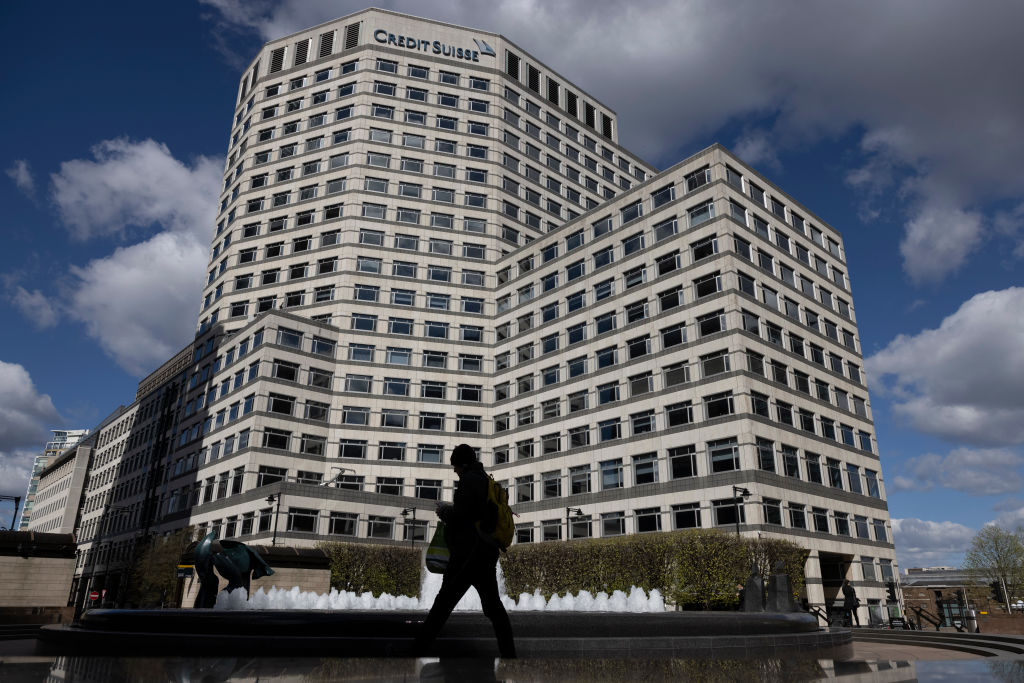Credit Suisse’s bondholders have forced Switzerland’s financial regulator to divulge the decree that wiped out their investments, handing them an early victory in the legal battle to overturn the controversial writedown.
Investors representing at least $4.5bn of wiped-out Credit Suisse additional tier 1 bonds filed a lawsuit against Finma last month. The suit accuses Switzerland’s banking regulator of having acted unconstitutionally when it ordered the bank to cancel the $17bn of AT1 bonds as a part of its shotgun marriage to UBS two months ago.
The aggrieved investors and their law firm Quinn Emanuel had to launch their challenge largely in the dark, as Finma had kept secret the wording of its decree ordering Credit Suisse to write down their investments.
However, the judge overseeing the case, which was filed in the city of St Gallen in eastern Switzerland, ordered the financial regulator to hand over the decree last week, giving the AT1 bondholders a firmer foothold to contest the writedown.
In addition to the decree that Finma issued to Credit Suisse ordering the bank to wipe out the AT1 bonds, the Swiss government issued two emergency ordinances that explicitly expanded the regulator’s powers under Swiss law to do so.
The first ordinance on Thursday March 16 did not mention the AT1 bonds. But on Sunday March 19, as the rescue was finalised, officials added the line: “Finma may order the borrower and the financial group to write down additional Tier 1 capital”. The government said this gave Finma a “clearer legal basis” to wipe out the bonds.
Finma has publicly said the contractual conditions were met to write down the bonds, because Credit Suisse drew on government-backed liquidity facilities in the days before its rescue by UBS.
This provoked outcry from bondholders because the AT1 bonds could only be written down if government assistance also bolstered the bank’s capital ratios, which many investors argued was not the case given Swiss authorities only intervened to aid Credit Suisse’s liquidity.
A copy of Finma’s decree seen by the Financial Times states that the government-backed facilities had “a direct positive effect on the liquidity and capital situation”. The regulator added that this satisfied the so-called “viability event” clause in the bond’s documents and meant that Credit Suisse “was therefore able to write off the AT1 instruments on its own initiative”.
One bondholder said the fact that the decree explicitly sets out Finma’s interpretation of the contracts governing the AT1 bonds gives them a clearer opening to challenge the writedown.
“Before it seemed like you were fighting a law, or an ordinance, which made it a constitutional fight” in which investors were less likely to prevail, he said. “Now it’s back in the realm of contracts.”
The investor also argued that Finma’s reasoning that drawing on liquidity facilities also bolstered Credit Suisse’s capital was “absurd” and could have set a worrying precedent in the market for European bank capital bonds.
“That a bank supervisor would say such a thing is incredible,” he added. “If every time a bank draws on central bank money it triggers their AT1s then we’d be in a real mess.”
Finma declined to comment.
The decree also sheds further light on the scale of the bank run that hit Credit Suisse in the days before the takeover was agreed.
Finma noted that following a run of withdrawals on the back of a crisis in US regional lenders, Credit Suisse “reached its internal cash limit with the Swiss National Bank” in mid-March and that a fall below this value risked that the bank would “no longer be able to execute its payment transactions properly”.
Credit Suisse applied to the SNB for SFr39bn in liquidity assistance on March 15, which was granted the following day. After the bank was hit with SFr14bn of outflows in a single day on March 16 and faced further withdrawals the next day, Credit Suisse applied for a further SFr20bn liquidity facility on March 17.
Then, because the “liquidity situation at [Credit Suisse] worsened despite all measures taken”, the Swiss government had to provide a “default guarantee” to enable “liquidity assistance loan” to the bank on March 19, the day of the takeover.
Credit Suisse bondholders force Swiss regulator to release AT1 wipeout decree



